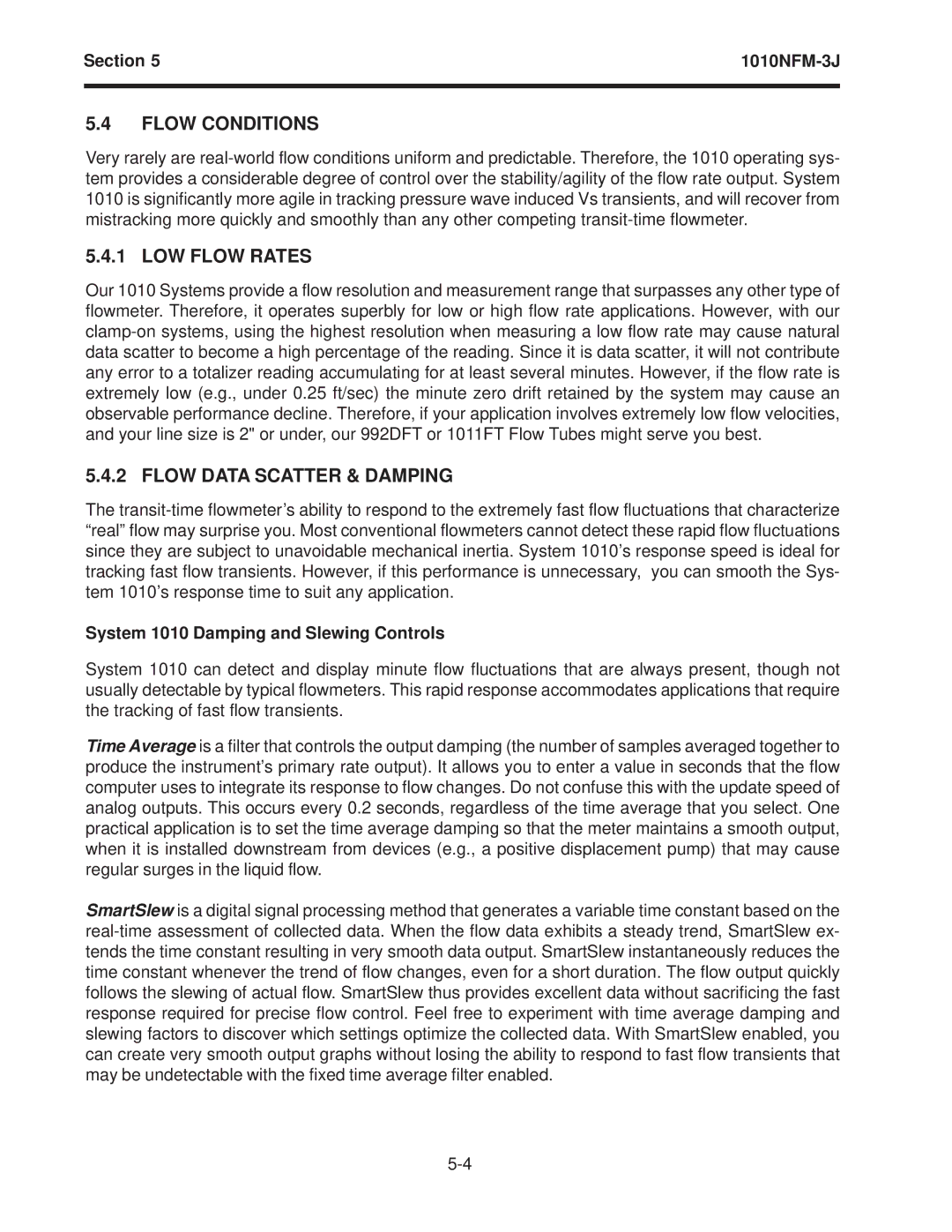Section 5 | |
|
|
5.4FLOW CONDITIONS
Very rarely are
5.4.1 LOW FLOW RATES
Our 1010 Systems provide a flow resolution and measurement range that surpasses any other type of flowmeter. Therefore, it operates superbly for low or high flow rate applications. However, with our
5.4.2 FLOW DATA SCATTER & DAMPING
The
System 1010 Damping and Slewing Controls
System 1010 can detect and display minute flow fluctuations that are always present, though not usually detectable by typical flowmeters. This rapid response accommodates applications that require the tracking of fast flow transients.
Time Average is a filter that controls the output damping (the number of samples averaged together to produce the instrument’s primary rate output). It allows you to enter a value in seconds that the flow computer uses to integrate its response to flow changes. Do not confuse this with the update speed of analog outputs. This occurs every 0.2 seconds, regardless of the time average that you select. One practical application is to set the time average damping so that the meter maintains a smooth output, when it is installed downstream from devices (e.g., a positive displacement pump) that may cause regular surges in the liquid flow.
SmartSlew is a digital signal processing method that generates a variable time constant based on the
